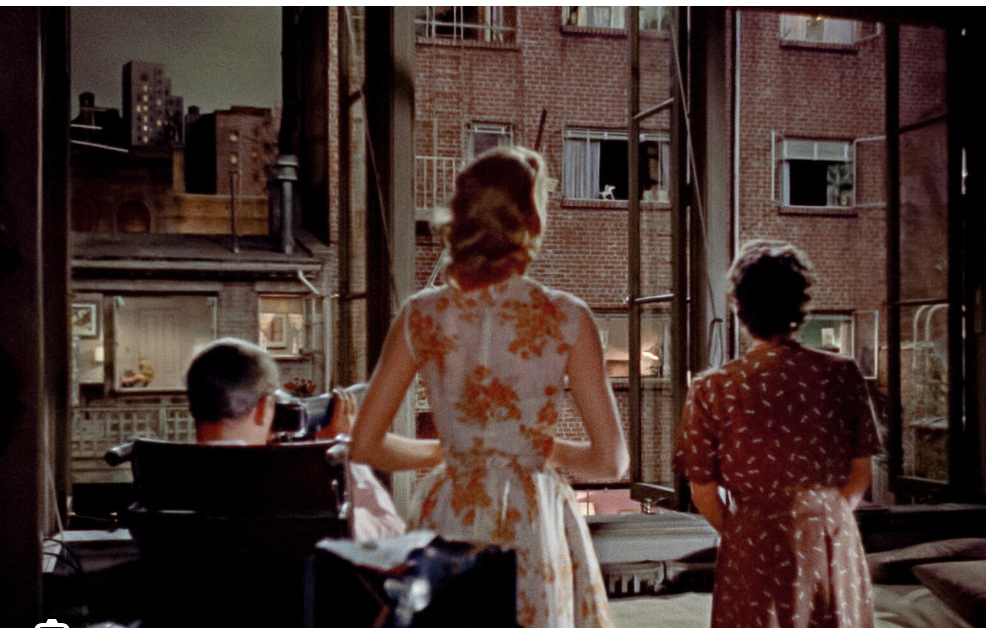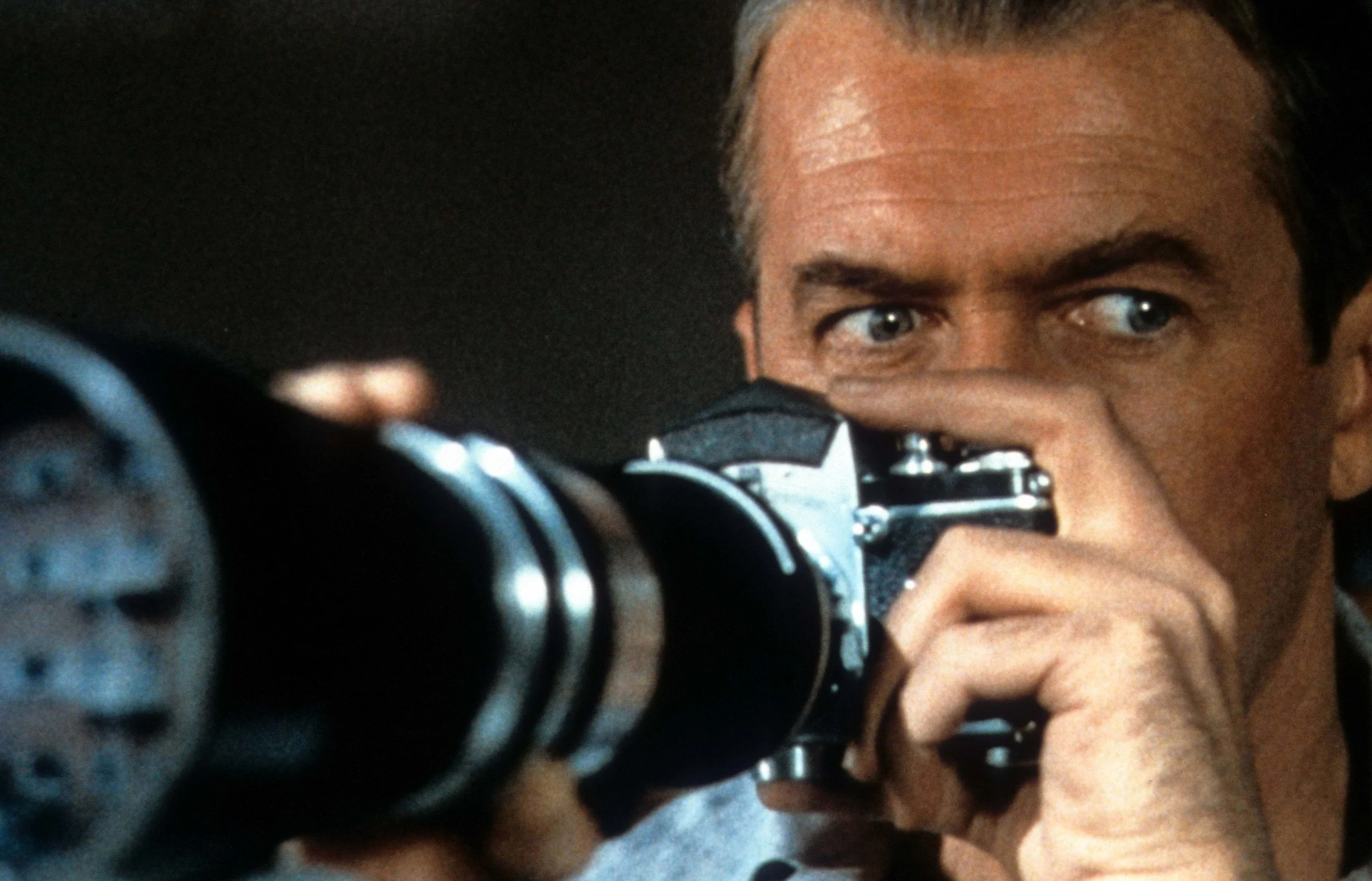REAR WINDOW: STILL THIS WRITER'S HITCHCOCK ALL-TIMER by Craig Hammill
Somewhere along the way I developed a personal metric for those filmmakers I thought were all-timers. If they had made a reasonable amount of movies and five of them could be considered all-time classics, they were among the best.
Alfred Hitchcock is one of the very few who arguably has MORE than five titles that could be considered all-time greats. He has TEN! The 39 Steps, The Lady Vanishes, Shadow of a Doubt, Notorious, Strangers on a Train, Rear Window, Vertigo, North by Northwest, Psycho, and The Birds make up a helluva rare resume. And I bet there are readers here who would nominate Rebecca, Rope, The Man Who Knew Too Much (either version), The Wrong Man etc to go on that list.
Damn, did this filmmaker know how to make movies!
So at a certain point, naming your personal favorite Hitchcock is like naming your personal favorite Van Gogh painting or Beatles song: there’s a clear embarrassment of riches.
All that said, 1954’s Rear Window starring Jimmy Stewart, Grace Kelly, Thelma Ritter, Wendall Corey, Raymond Burr still remains my personal favorite among favorites (with The 39 Steps, Shadow of a Doubt, and Psycho all nipping at its heels).
One aspect of Rear Window it shares with the absolute greatest movies of all time is that it continues to offer new discoveries with each repeat viewing. At our most recent screening a few weeks ago, I noticed for the first time that at the beginning of the picture, Raymond Burr, the “did he or didn’t he kill his wife” neighbor/main antagonist of the picture, kisses his sick wife on her forehead and she tosses a rose he brought in with her meal.
This grace note/detail of marital discord somehow escaped me the first 20+ times I saw the movie. And it’s a key moment because it demonstrates Hitchcock’s commitment to making his villains/antagonists understandable/empathetic. We may not ever feel that Lars Thorwald (Raymond Burr) is in the right or anywhere near it. But we do come to understand why he might want to break free, have an affair, be with someone who loves rather than ridicules him.
Hitchcock does this with his villains in almost all his movies. It borders on Shakespearean.
In The 39 Steps, the lead foreign spy turns out to be an urbane country gentleman with a loving family. In Shadow of a Doubt, though Joseph Cotton’s “Widow killer” Uncle Charlie is clearly psychotic, he is also beloved by his own family AND in his own strange way dotes/loves his niece Charlie.
In Psycho, Norman Bates is horrifying because of how externally vulnerable and needy he appears to be. In North by Northwest, James Mason’s master villain/spy is constantly apologetic for the troubles he causes others, and so on.
If Rear Window has any flaw, it’s the slight suspension of disbelief one must take to believe that Jimmy Stewart really is debating whether he should continue dating Grace Kelly. C’mon Jimmy. You ain’t fooling nobody.
Also, during this most recent viewing of Rear Window, I noticed more strongly than ever before how Grace Kelly and Jimmy Stewart’s “will they or won’t they commit to each other” couple turn the corner towards commitment the moment they ironically connect on their morbid fascination in finding out if Thorwald really did kill his wife. Call it kink. Call it fetish. Call it whatever. But somehow Kelly gains Stewart’s real love and admiration and loyalty when she proves herself every inch his equal in throwing herself into dangerous situations and fascinations.
It’s a fascinating sexual-romantic-emotional dynamic that has only become clearer to me with each re-watch.
Rear Window also represents in some ways the apotheosis of the Hitchcock style. The director had made several “single location” or near single location movies prior to this (Lifeboat, Rope being the most obvious) but as a viewer, as great as those movies are, you are still aware that there’s a kind of gimmick at play.
The miracle of Rear Window is that it’s the same gimmick and yet never once do you think of the movie as a single location picture even though its entirety takes place in Stewart’s apartment and the apartments/shared space just outside his window.
Hitchcock doesn’t better his single location technique, he transcends it. He makes the greatest single location movie of all time because you never realize it’s a single location.
Still amazing in 2023 to realize the entire movie was shot on one set, on one soundstage.
And this is key. For this writer, the best “oners” (single shots) are the ones you don’t realize are oners. The best special effects are the ones so artistic/consummate that your experience of them has more to do with how they service the story than their own merits.
It’s not that I believe in an invisible style. I don’t. I love style. And I think that when a great style/form/structure is married to a great story that’s when you get the best movies.
When technique and story merge, when they dance together thrillingly, as they do in Rear Window, you are witness to an exciting rare artistry.
And finally (for today’s entry) there is a whole checklist of nooks and crannies we could continue to discuss (but will only mention today): amazing performances from the leads to the walk ons, amazing production design for a film shot entirely on a sound stage, amazing editing, shot selection, sensuality, humour, sound design. . .
Actually, let’s take a moment for Rear Window’s sound design. I nominate the sound design in this movie as one of the best sound designs in all of cinema. To this day. Because even the sound is constantly telling, adding to the story. A lonely audible fog horn/boat horn on New York City’s Hudson signals it’s late evening or the middle of the night when the city is so quiet you can hear the sounds on the bay. Worldized radio music, laughing children, voices from apartments signal its the busy afternoon, and so on.
The sound design is as critical to the picture as the images/shots. And this to me is the definition, short hand of great cinema: creative story/character based use of sound + image.
There’s so much more to discuss with a movie this rich, this fascinating. And that’s what makes it great.
Rear Window is a masterpiece among masterpieces. And it still thrills, draws the crowds, wows near 70 years after its initial release. A testament to all-time moviemaking if ever there was one.
Craig Hammill is the founder.programmer of Secret Movie Club.
Did I just see one of the greatest movies of all time?





